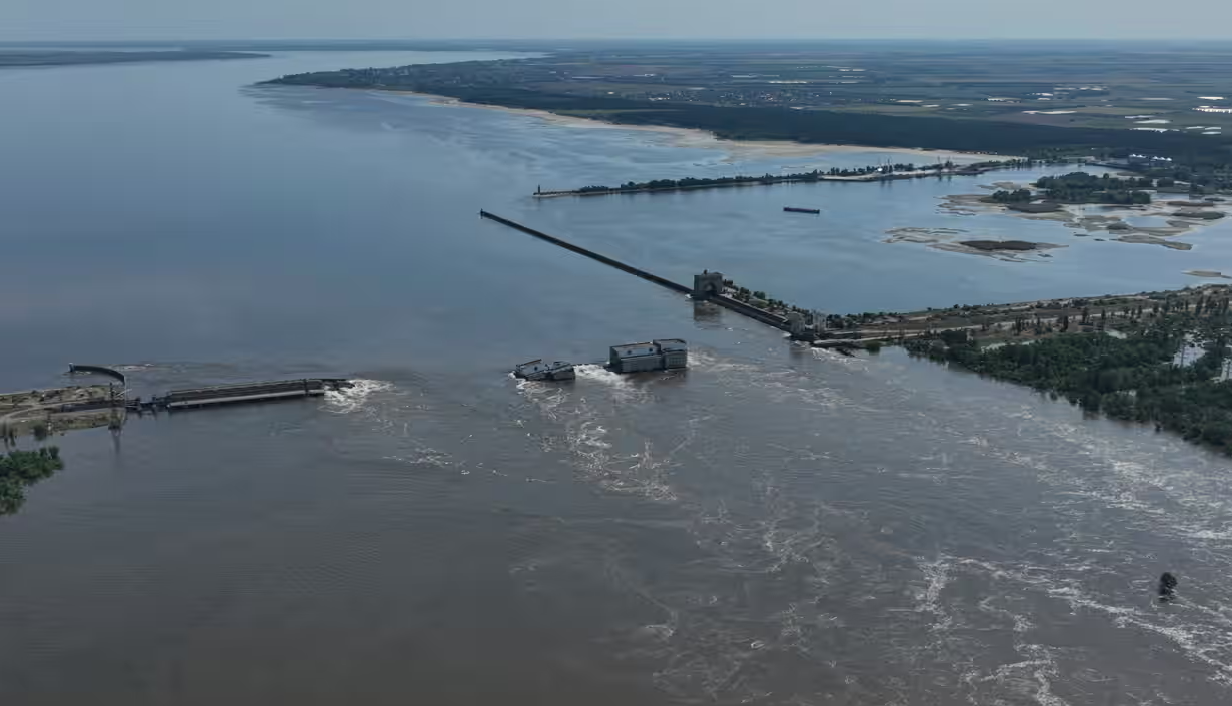
A new study has revealed that the destruction of the Kakhovka dam in Ukraine has led to an environmental disaster with far-reaching consequences, comparable to the aftermath of the Chornobyl nuclear disaster. The explosion of the dam has released a deadly mix of heavy metals and toxins into the surrounding environment, creating a “toxic timebomb” that could pose significant health risks for years to come.
The Kakhovka dam, located on the Dnipro River, was destroyed earlier this year during the ongoing conflict in Ukraine, causing widespread flooding and displacing thousands of residents. The dam’s destruction not only led to immediate loss of life and property but also caused significant damage to the ecosystem in the region. According to researchers, the floodwaters unleashed by the explosion have carried vast quantities of heavy metals, pesticides, and other toxic substances from the riverbed, which have now spread into surrounding areas.
The study, conducted by a team of international environmental scientists, concluded that the environmental impact of the dam destruction could rival the long-term consequences of the Chornobyl nuclear disaster, which released radioactive particles into the environment, causing widespread contamination. The flooding triggered by the dam’s collapse has resulted in a large-scale dispersion of harmful substances, including lead, arsenic, and cadmium, which have been leached from the soil into the water supply.
These substances are known to pose serious health risks, including long-term poisoning, liver and kidney damage, and an increased risk of cancer. The environmental effects are expected to last for decades, with experts warning that the damage may take generations to fully reverse, if it can be reversed at all. Contaminated water supplies are a particular concern, as many communities in the area rely on the Dnipro River for drinking water and agriculture.
The environmental impact of the Kakhovka dam explosion is being described as a “toxic timebomb,” as the heavy metals and toxins continue to seep into the ecosystem. The flooding caused by the explosion has washed these pollutants into the soil, rivers, and lakes, potentially contaminating crops, fish, and wildlife, and further exacerbating the already dire humanitarian situation in the region.
The destruction of the Kakhovka dam and its far-reaching environmental consequences have raised alarms within the international community. Environmental organisations, as well as health agencies, are calling for immediate action to mitigate the damage, with a focus on decontaminating water supplies and providing long-term health monitoring for those affected by the pollution.
As the conflict continues, the full scope of the environmental and health impacts of the Kakhovka dam explosion remains to be seen. However, this study serves as a stark reminder of the devastating toll that modern warfare can take not only on human lives but also on the environment, leaving lasting scars that will affect generations to come.













